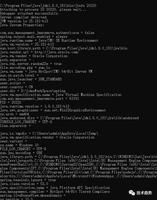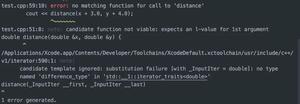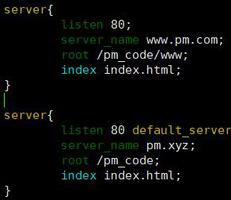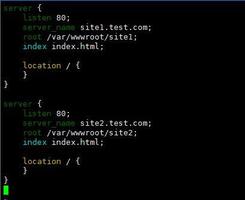C++11新特性之auto的使用
前言
C++是一种强类型语言,声明变量时必须明确指出其类型。但是,在实践中,优势我们很难推断出某个表达式的值的类型,尤其是随着模板类型的出现,要想弄明白某些复杂表达式的返回类型就变得更加困难。为了解决这个问题,C++11中引入的auto主要有两种用途:自动类型推断和返回值占位。auto在C++98中的标识临时变量的语义,由于使用极少且多余,在C++11中已被删除。前后两个标准的auto,完全是两个概念。
一、自动类型推断
auto自动类型推断,用于从初始化表达式中推断出变量的数据类型。通过auto的自动类型推断,可以大大简化我们的编程工作。下面是一些使用auto的例子。
#include <vector>
#include <map>
using namespace std;
int main(int argc, char *argv[], char *env[])
{
// auto a; // 错误,没有初始化表达式,无法推断出a的类型
// auto int a = 10; // 错误,auto临时变量的语义在C++11中已不存在, 这是旧标准的用法。
// 1. 自动帮助推导类型
auto a = 10;
auto c = 'A';
auto s("hello");
// 2. 类型冗长
map<int, map<int,int> > map_;
map<int, map<int,int>>::const_iterator itr1 = map_.begin();
const auto itr2 = map_.begin();
auto ptr = []()
{
std::cout << "hello world" << std::endl;
};
return 0;
};
// 3. 使用模板技术时,如果某个变量的类型依赖于模板参数,
// 不使用auto将很难确定变量的类型(使用auto后,将由编译器自动进行确定)。
template <class T, class U>
void Multiply(T t, U u)
{
auto v = t * u;
}
二、返回值占位
template <typename T1, typename T2>
auto compose(T1 t1, T2 t2) -> decltype(t1 + t2)
{
return t1+t2;
}
auto v = compose(2, 3.14); // v's type is double
三、使用注意事项
1、我们可以使用valatile,pointer(*) ,reference(&) ,rvalue reference(&&) 来修饰auto
auto k = 5;
auto* pK = new auto(k);
auto** ppK = new auto(&k);
const auto n = 6;
2、用auto声明的变量必须初始化
auto m; // m should be intialized
3、auto不能与其他类型组合连用
auto int p; // 这是旧auto的做法。
4、函数和模板参数不能被声明为auto
void MyFunction(auto parameter){} // no auto as method argument
template<auto T> // utter nonsense - not allowed
void Fun(T t){}
5、定义在堆上的变量,使用了auto的表达式必须被初始化
int* p = new auto(0); //fine
int* pp = new auto(); // should be initialized
auto x = new auto(); // Hmmm ... no intializer
auto* y = new auto(9); // Fine. Here y is a int*
auto z = new auto(9); //Fine. Here z is a int* (It is not just an int)
6、以为auto是一个占位符,并不是一个他自己的类型,因此不能用于类型转换或其他一些操作,如sizeof和typeid
int value = 123;
auto x2 = (auto)value; // no casting using auto
auto x3 = static_cast<auto>(value); // same as above
7、定义在一个auto序列的变量必须始终推导成同一类型
auto x1 = 5, x2 = 5.0, x3='r'; // This is too much....we cannot combine like this
8、auto不能自动推导成CV-qualifiers(constant & volatile qualifiers),除非被声明为引用类型
const int i = 99;
auto j = i; // j is int, rather than const int
j = 100 // Fine. As j is not constant
// Now let us try to have reference
auto& k = i; // Now k is const int&
k = 100; // Error. k is constant
// Similarly with volatile qualifer
9、auto会退化成指向数组的指针,除非被声明为引用
int a[9];
auto j = a;
cout<<typeid(j).name()<<endl; // This will print int*
auto& k = a;
cout<<typeid(k).name()<<endl; // This will print int [9]
总结
以上是 C++11新特性之auto的使用 的全部内容, 来源链接: utcz.com/z/342726.html









